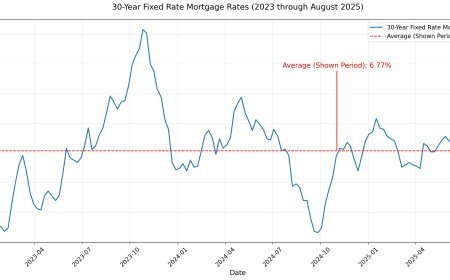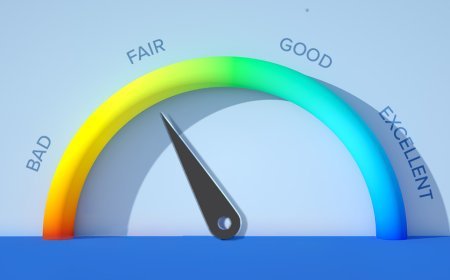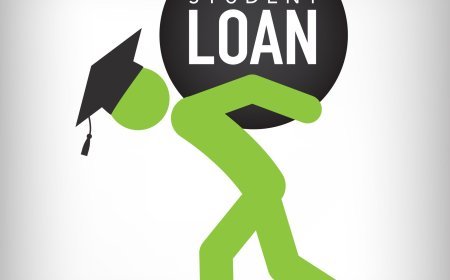The Complete Guide to 401(k) Rollovers: Avoid Costly Mistakes When Changing Jobs
Changing jobs used to mean saying goodbye to colleagues and learning new office coffee machines, but today it also means navigating the treacherous waters of 401(k) rollovers. One wrong move during this process can cost you thousands in taxes and penalties, while the right approach can actually improve your retirement savings situation. The rules governing 401(k) rollovers are complex, filled with deadlines, tax implications, and investment restrictions that can trap even financially savvy individuals. Yet millions of Americans face this decision annually as job mobility increases and traditional career paths give way to more frequent job changes throughout working life.

Changing jobs used to mean saying goodbye to colleagues and learning new office coffee machines, but today it also means navigating the treacherous waters of 401(k) rollovers. One wrong move during this process can cost you thousands in taxes and penalties, while the right approach can actually improve your retirement savings situation.
In This Article:
- Your Four Rollover Options: Understanding the pros and cons of each path for your old 401(k) money.
- Tax Implications and Timing: How to avoid the 20% withholding trap and other costly tax mistakes.
- Direct vs. Indirect Rollovers: Why the method you choose can make or break your financial outcome.
- Investment and Fee Considerations: How to evaluate whether your new plan beats your old one or an IRA.
- Special Situations and Advanced Strategies: Handling company stock, loans, and other complex scenarios.
The rules governing 401(k) rollovers are complex, filled with deadlines, tax implications, and investment restrictions that can trap even financially savvy individuals. Yet millions of Americans face this decision annually as job mobility increases and traditional career paths give way to more frequent job changes throughout working life.
Understanding Your Four Options
When you leave a job with a 401(k), you face four distinct paths for your retirement money, each with different implications for your financial future. The first option is leaving your money in your former employer's plan, which might seem like the easiest choice but often isn't the best long-term strategy.
Rolling your money into your new employer's 401(k) plan represents the second option, assuming your new job offers a retirement plan and accepts rollovers. This approach maintains the tax-deferred status of your savings while potentially providing access to new investment options and loan features.
The third option involves rolling your 401(k) into an Individual Retirement Account (IRA), which typically offers the broadest investment choices and most flexibility. IRAs often provide access to thousands of investment options compared to the limited menu in most 401(k) plans.
Cashing out your 401(k) represents the fourth option and almost always the worst choice financially. This approach triggers immediate taxes on the entire amount plus a 10% early withdrawal penalty if you're under age 59½, potentially costing you 30-40% of your retirement savings.
The Critical Importance of Direct Rollovers
The method you use to move your 401(k) money can have dramatic tax consequences. Direct rollovers, where money moves directly from one retirement account to another without passing through your hands, represent the safest approach and avoid several potential pitfalls.
Indirect rollovers, where you receive a check for your 401(k) balance and then deposit it into another retirement account, trigger automatic 20% federal tax withholding. Even if you plan to complete the rollover, your former employer must withhold this money and send it to the IRS, leaving you short when you try to deposit the full amount into your new account.
To complete an indirect rollover properly, you must contribute the full original amount to your new retirement account within 60 days, including the 20% that was withheld for taxes. This means coming up with that money from other sources, or the shortfall becomes a taxable distribution subject to penalties if you're under 59½.
The 60-day deadline for indirect rollovers is strictly enforced, with limited exceptions for unusual circumstances. Missing this deadline turns your entire 401(k) balance into a taxable distribution, potentially creating a massive tax bill and destroying years of retirement savings progress.
Evaluating Your New Employer's Plan
Not all 401(k) plans are created equal, and rolling money into an inferior plan can cost you thousands in fees and lost returns over time. Before rolling money into your new employer's plan, carefully evaluate its investment options, fees, and features compared to your alternatives.
Investment selection varies dramatically between plans. Some offer excellent, low-cost index funds and target-date funds, while others provide only expensive, actively managed options with high fees. Review the plan's investment menu and expense ratios before committing your rollover money.
Plan fees can significantly impact your long-term returns, especially for smaller account balances. Some plans charge high administrative fees, while others subsidize these costs for employees. Request a fee disclosure document to understand all costs associated with the plan.
Consider the plan's features beyond investments and fees. Some plans offer loan options, hardship withdrawals, or in-service distributions that might be valuable. Others provide financial planning resources or managed account services that could benefit your overall retirement strategy.
The IRA Advantage
Rolling your 401(k) into an IRA often provides the most flexibility and investment options, but this approach isn't always optimal. IRAs typically offer access to thousands of mutual funds, ETFs, and other investments compared to the limited options in most 401(k) plans.
Fee structures in IRAs can be more transparent and often lower than 401(k) plans, especially if you choose low-cost providers like Vanguard, Fidelity, or Schwab. However, some 401(k) plans offer institutional share classes with even lower fees than retail IRA options.
IRAs provide more flexibility for estate planning, allowing you to name multiple beneficiaries and create more sophisticated distribution strategies. They also offer more options for early withdrawals, such as penalty-free distributions for first-time home purchases or higher education expenses.
However, IRAs have some disadvantages compared to 401(k) plans. They don't offer loan options, and they may provide less creditor protection in bankruptcy situations. Additionally, if you have traditional IRA money, it can complicate future backdoor Roth IRA strategies.
Special Considerations and Complex Situations
Company stock in your 401(k) requires special handling due to Net Unrealized Appreciation (NUA) rules. If you have highly appreciated company stock, you might benefit from taking a distribution of the stock rather than rolling it over, potentially converting future gains from ordinary income to capital gains treatment.
Outstanding 401(k) loans complicate rollover decisions significantly. Most plans require loan repayment when you leave employment, and failure to repay creates a taxable distribution. Some new employers allow you to transfer loan balances, but this option is relatively rare.
Age considerations affect your rollover strategy, particularly if you're between ages 55 and 59½. Money in 401(k) plans can be withdrawn penalty-free after age 55 if you separate from service, but IRA withdrawals remain subject to the 10% penalty until age 59½.
If you're planning to retire early and need access to retirement funds before age 59½, keeping money in your 401(k) might provide more flexibility than rolling to an IRA. However, this advantage only applies if you separate from service after age 55.
Timing and Coordination Strategies
The timing of your rollover can affect your investment returns and tax situation. Market volatility might influence when you want to move money, though trying to time the market is generally not recommended for long-term retirement savings.
Consider coordinating your rollover with other financial moves, such as Roth conversions or rebalancing your overall portfolio. A job change provides an opportunity to reassess your entire retirement strategy and make adjustments.
If you're changing jobs multiple times, consider consolidating old 401(k) accounts to simplify your financial life. Managing multiple small accounts becomes increasingly difficult and may result in higher fees or forgotten accounts.
Implementation Best Practices
Start the rollover process early, as it can take several weeks to complete all the paperwork and transfers. Contact both your old and new plan administrators to understand their specific requirements and timelines.
Keep detailed records of all rollover transactions, including forms, confirmations, and correspondence. These records are essential for tax reporting and resolving any problems that might arise during the transfer process.
Consider working with a financial advisor if your situation is complex or involves large amounts of money. The cost of professional advice is often minimal compared to the potential cost of mistakes during the rollover process.
401(k) rollovers represent both an opportunity and a risk when changing jobs. By understanding your options, avoiding common pitfalls, and carefully evaluating your choices, you can use job changes to improve your retirement savings situation rather than simply maintaining the status quo. The key is taking time to make informed decisions rather than rushing through the process or defaulting to what seems easiest.
What's Your Reaction?
 Like
0
Like
0
 Dislike
0
Dislike
0
 Love
0
Love
0
 Funny
0
Funny
0
 Angry
0
Angry
0
 Sad
0
Sad
0
 Wow
0
Wow
0







































